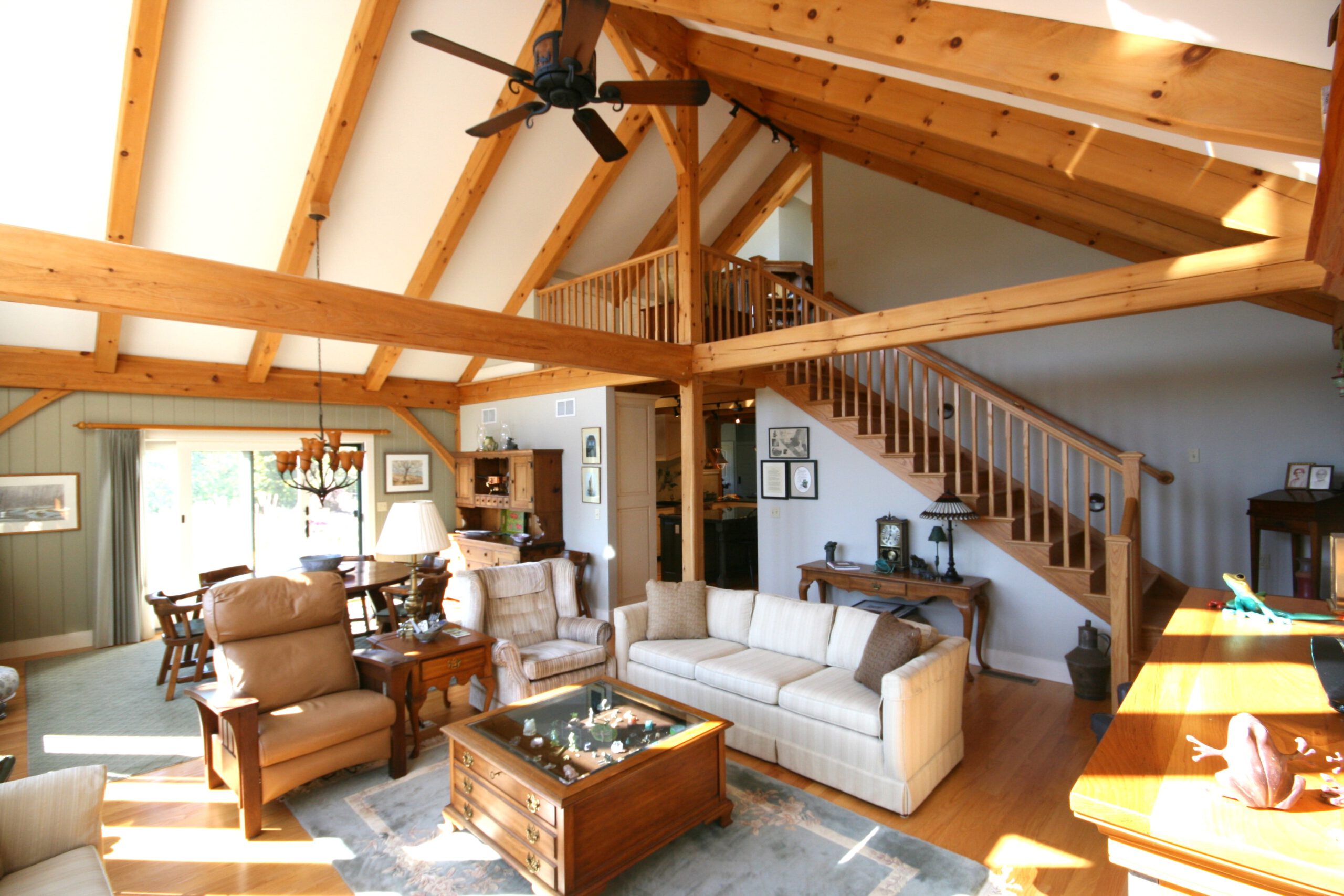(Note- this article originally was posted prior to 2012, when the economy was recovering from a severe recession and the foreclosure crisis. But while the economic conditions have changed radically, the reasons for building a Brooks Post & Beam home are the same!)
I am seeing a dramatic increase in the construction of timber frame homes, primarily due to the growing population of baby boomers moving into retirement. Melanie Plenda, a writer for the New Hampshire Business Review, did a great job distilling this concept into an article featured on their cover a couple of weeks ago, despite my inability to form comprehensible sentences the afternoon that I spoke with her.
Timber frame homes have physical advantages over other forms of construction and offer unique characteristics that this demographic in this economy are recognizing as a perfect solution to their unique needs. Given the size of the boomer generation and the pent-up demand after several lagging years, this may just be the catalyst we need to see recovery in the struggling housing market.
So what is it that makes timber frame homes so appealing to couples moving into retirement? First of all, the nature of the structure lends itself easily to large open spaces, making it possible to live comfortably in a smaller, more affordable home. For example, a kitchen and dining room separated by a counter or island give both rooms a feeling of greater space then they actually contain individually. When these rooms are open to a living room beyond with large windows overlooking local natural features, the sense of space blends one into the next. This anchors you in the context of the larger property, keeps you secure within the boundaries of your shelter, but not confined and separated from the natural world around you. Nor do you feel isolated from others, as this openness allows you to be aware of guests and family coming and going and keeps you connected with each other even while focused on individual activities.
Timer frame homes are typically wrapped in a tight insulated envelope made of Stresskin panels. This energy efficient construction method drives down heating and cooling costs, a benefit to everyone of course, but especially to those moving into the fixed income of retirement.
But the most appealing characteristic of post and beam construction may be the aesthetic appeal of heavy timber. Not only does wood tap into our affinity for nature and the forest, but the visible strength of large timbers also adds a sense of security of an entirely different nature than that of 2×4 sticks clad in sheetrock.
The affordability of a Brooks Post and Beam Home, when compared to a quality, energy efficient, conventionally framed structure, is a pleasant surprise to many retiring couples. Depressed home prices have made it much more costly to build new than to buy an existing home. But while a distressed property purchase is tempting to boomers moving into retirement, few want to take on someone else’s problems and compromise on the dream home they always imagined living into their retirement. After living in several homes during our lives, most of us know what we want and like and have worked long and hard to have the satisfaction of living in a home built to our needs.
Retiring or soon-to-be-retiring couples are no longer looking at their homes as investment vehicles, but more like a savings plan. Their new energy-efficient home will save them many thousands of dollars in energy costs and give them the pleasure and security of “hearth and home.” As time goes by and energy costs increase, the property will easily retain its value and be a valuable asset to pass on to the next generation.
After several decades of wage earning and raising families many of us are returning to that dream of energy independence and the enjoyment of life and nature that was the undercurrent of the counterculture of our youth. As work becomes a lower priority and construction costs remain depressed there may never be a better time for many of us to realize this dream. What a great journey’s end to a long strange trip!
Author: Paul Freeman
